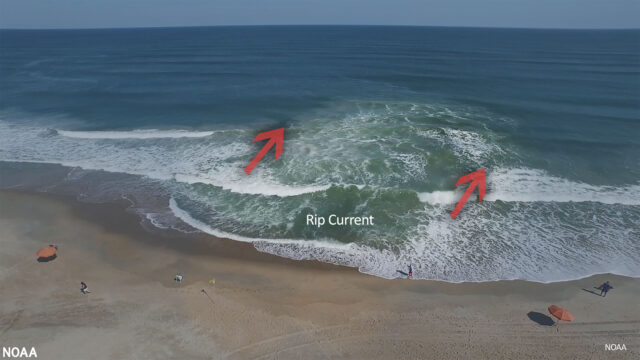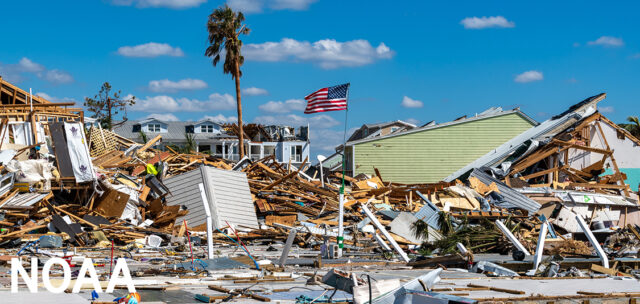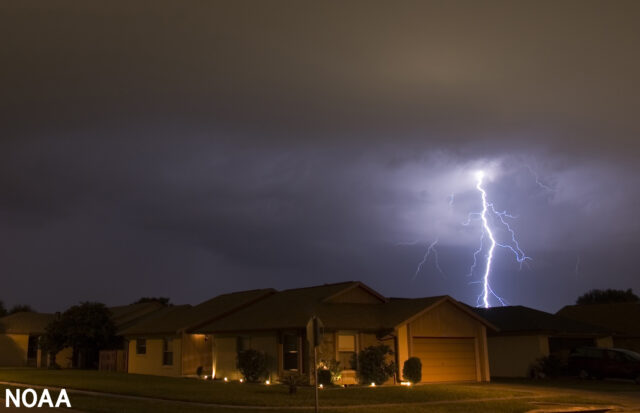It’s what we’ve waited for: Summer! Though the season brings longer, sunnier days, it also comes with life-threatening weather hazards such as extreme heat, rip currents, and thunderstorms and lightning.
1. Excessive heat. It’s a killer.

Heat is one of the most deadly weather hazards, so don’t underestimate it. Warm temperatures can quickly rise to dangerous levels — especially in parked cars. Get the latest forecast on weather.gov and make sure you know what to do if there’s a heat alert product issued for your area:
- An Excessive Heat Warning means take action!
- An Excessive Heat Watch means be prepared.
Do you know the signs and symptoms of heat exhaustion and heatstroke? See our graphic and spread the word.

Rip currents are so powerful that they can sweep even the strongest swimmer away from shore. If you are caught in a rip current, relax and try not to panic. Follow these tips to make it back to safety:
- Don’t swim against the current.
- If you are able, swim parallel to the current (following the shore) until you are out of the rip current, and then you can swim to shore/beach.
- If you can’t escape, float or tread water and yell or wave for assistance. Always swim at beaches where there are lifeguards.
3. Hurricanes and tropical storms. Have a plan before one hits home.

Many powerful hurricanes, such as Michael, Katrina, Andrew and Camille, were tropical storms just days before making landfall. Don’t wait until it’s too late — know your potential evacuation routes and have an emergency supply kit ready to go now. Also, have a family communication plan in place in the event of an evacuation.
4. Thunderstorms. Go indoors at the first sign.

Severe thunderstorms can produce dangerous lightning, hail and wind gusts that damage property and threaten lives. If you “See a flash, dash inside” and “When thunder roars, go indoors”: Always head indoors at the first sign of a thunderstorm, and stay away from windows. If there are no buildings nearby, get inside a vehicle to ride out the storm.
Head over to our Summer Safety page if you want to know more.
NOAA’s National Weather Service weather safety website has you covered with important information about extreme weather hazards to help you stay Weather-Ready at the beach, by the pool, while picnicking or on the golf course.
Be sure to share our tweetable Summer Safety tips with your social network.
Source: NOAA
Rod Washington Writer, filmmaker, model railroader, dreamer, posting videos and articles about trains. Also, posting railfanning videos and updates about his own model railroad layout via his webpage, the rail project (coming soon).


